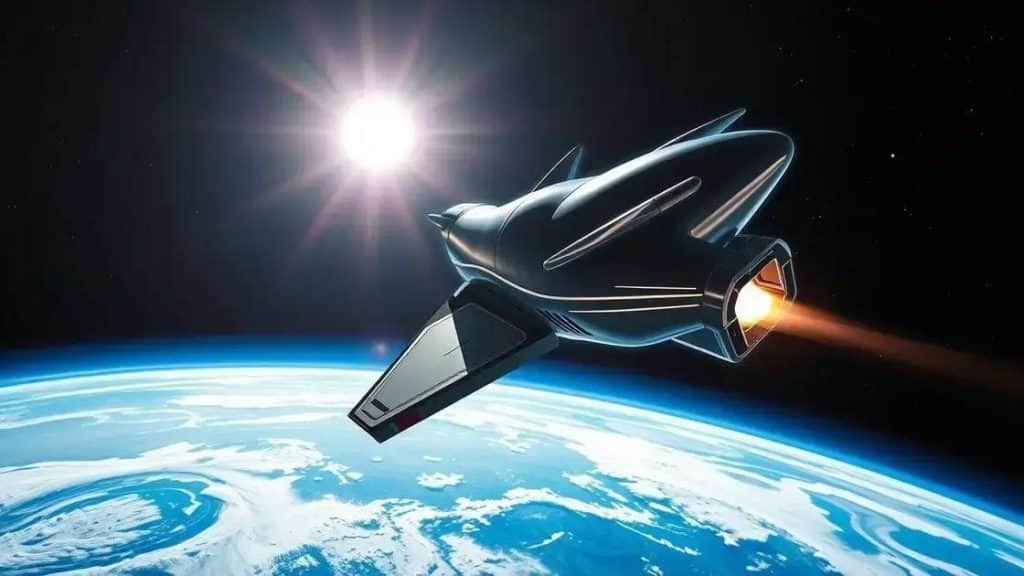Space exploration trends that are shaping our future

Space exploration trends significantly impact Earth by driving technological advancements, promoting economic growth, and enhancing environmental awareness through international cooperation and innovation.
Space exploration trends are changing the way we understand the universe and our place in it. Have you ever wondered what these trends mean for our future? Let’s dive in!
The rise of commercial spaceflight
The rise of commercial spaceflight is transforming the aerospace industry. Companies like SpaceX and Blue Origin are leading the charge, making space more accessible than ever before. This trend isn’t just for astronauts; it’s opening new opportunities for adventurous civilians.
Key Players in Commercial Spaceflight
As we explore this space frontier, it’s important to note the major players involved. Each company has unique goals:
- SpaceX: Aiming to send humans to Mars.
- Blue Origin: Focused on suborbital flights for tourists.
- Virgin Galactic: Pioneering commercial space tourism.
The advances in technology are impressive. Just think about the reuse of rocket components; this dramatically cuts costs and makes launches more frequent. Such innovation is crucial for the growth of the entire industry. With lower prices, more people will consider traveling to space.
Benefits of Commercial Spaceflights
There are many benefits associated with this trend:
- Increased innovation and technology development.
- Boost to the global economy through job creation.
- Enhanced international collaboration in space initiatives.
As commercial spaceflight expands, we can expect tourism, research, and even mining of asteroids to become reality. Watching this sector grow is fascinating, as it combines science and entrepreneurship.
Innovations in spacecraft technology

The world of spacecraft technology is continuously evolving, bringing exciting innovations that push the boundaries of what we can achieve in space travel. From advanced propulsion systems to AI navigation, these technologies are revolutionizing our journeys beyond Earth.
Emerging Technologies in Spacecraft
Many new technologies are shaping the future of space travel. Here are a few key innovations:
- Reusable rockets: This technology allows spacecraft to return to Earth safely and be used again, significantly reducing costs.
- Ionic propulsion: This system uses electricity to create thrust, allowing for more efficient space travel over long distances.
- Smart navigation systems: AI-powered navigation enables spacecraft to make real-time adjustments during flight, enhancing safety and precision.
These advancements are not just about getting to space faster. They also improve safety and sustainability, allowing us to explore further while minimizing our impact on the environment.
The Role of 3D Printing
Another groundbreaking innovation is 3D printing in spacecraft technology. This process enables manufacturers to create parts on-demand, reducing waste and transportation costs. As a result, space missions become more feasible and cost-effective. Imagine constructing parts on the Moon or Mars, eliminating the need to send every component from Earth!
As we look ahead, incorporating technologies like solar sails and advancements in materials science will play crucial roles. These innovations promise to enhance spacecraft durability and efficiency, making long-term space missions more practical.
International cooperation in space missions
International cooperation in space missions is becoming increasingly vital as nations recognize the importance of working together in the exploration of space. Countries around the world are joining forces to share knowledge, resources, and technology.
Benefits of Collaboration
Collaborating on space projects offers many benefits:
- Cost sharing: Joint missions reduce the financial burden on individual countries.
- Enhanced expertise: Countries bring unique skills and technologies to the table, improving mission success rates.
- Cultural exchange: Collaboration fosters connections between scientists from different cultural backgrounds.
For instance, the International Space Station (ISS) is a shining example of how nations can unite for research and exploration. It is a facility where astronauts from multiple countries live and work together, conducting experiments that benefit humanity.
Notable International Partnerships
Several major projects highlight successful international cooperation:
- Artemis Program: This NASA-led initiative includes partnerships with ESA, JAXA, and others to return humans to the Moon.
- ExoMars Rover: A collaboration between ESA and Roscosmos aims to search for signs of life on Mars.
- James Webb Space Telescope: This project unites NASA, ESA, and the Canadian Space Agency to explore the universe.
These partnerships underscore how working together can lead to significant advancements in our understanding of space. As humanity seeks to explore even further, international collaboration will likely shape future missions, including those to Mars and beyond.
Impact of space exploration on Earth

The impact of space exploration on Earth is profound and multifaceted. While many focus on the thrill of discovering other worlds, the benefits of these missions reach back to our planet, enhancing technology, economy, and understanding of our environment.
Technological Advancements
Space exploration has led to numerous breakthroughs that benefit daily life. Innovations such as:
- Satellite technology: This has improved communication and weather forecasting.
- Medical technology: Techniques developed for space missions have advanced imaging and treatment methods.
- Materials science: New materials used in spacecraft have improved manufacturing processes on Earth.
These developments showcase how space missions often lead to unexpected innovations that enhance our quality of life.
Economic Growth
Investing in space not only drives technology but can also lead to significant economic benefits. The space industry creates jobs in various sectors while spurring interest and investment in STEM (science, technology, engineering, mathematics) fields. By engaging new generations, we encourage a workforce equipped to tackle future challenges.
Additionally, the commercial space sector is rapidly growing. As more private companies enter the field, competition fosters innovation, making space more accessible and cost-effective.
Environmental Awareness
Space exploration provides critical insights into our own planet. Satellites play a vital role in monitoring environmental changes, tracking climate patterns, and understanding weather phenomena. By studying Earth from space, we gain a clearer understanding of how to protect our environment and respond to natural disasters.
Such knowledge is crucial as we face global challenges, reminding us that exploring the cosmos often leads back to Earth, helping us to build a sustainable future.
In conclusion, the benefits of space exploration extend far beyond reaching new planets. Through international cooperation, technological advancements, and economic growth, we gain valuable insights that help improve life on Earth. By investing in space missions, we drive innovation, create jobs, and enhance our understanding of the environment. As we continue to explore the cosmos, we also learn how to better care for our planet, ensuring a sustainable future for generations to come.
FAQ – Frequently Asked Questions about Space Exploration
What are the main benefits of space exploration on Earth?
Space exploration leads to technological advancements, economic growth, and increased environmental awareness, benefiting life on Earth.
How does international cooperation play a role in space missions?
International cooperation allows countries to share resources, expertise, and reduce costs, leading to more successful missions.
What technologies have emerged from space exploration?
Technologies such as satellite communication, advanced medical imaging, and new materials are direct benefits of space exploration.
Why is space exploration important for the future generation?
Space exploration inspires future generations to pursue careers in STEM fields, encouraging innovation and critical thinking.





